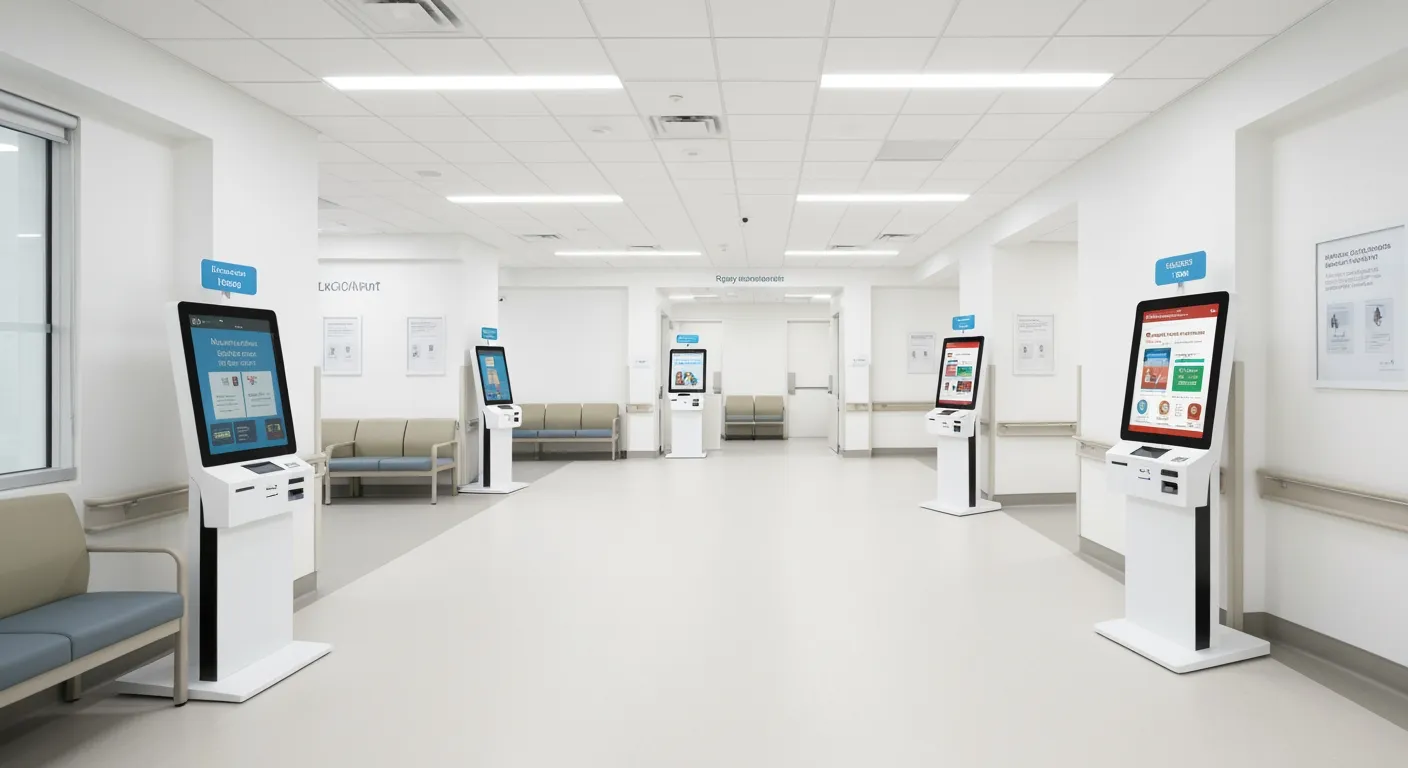Introduction: The Shift Towards Patient-Centric Digital Healthcare
Overview of patient-centric healthcare
Patient-centric healthcare places the patient at the core of all clinical and operational decisions. This approach promotes a collaborative relationship between patients and providers, emphasizing personalized care planning that addresses individual medical histories, preferences, and goals.
Importance of digital transformation in healthcare delivery
Digital transformation revolutionizes the healthcare landscape by integrating technologies such as electronic health records (EHRs), telehealth, and AI-driven analytics. These advancements enable proactive care models, improve access and quality, and foster continuous patient engagement. As healthcare systems evolve, digital infrastructure and consumer-focused strategies are fundamental for meeting modern expectations and enhancing patient outcomes.
Benefits of personalized digital patient journeys
Personalized digital journeys leverage data-driven insights to tailor care pathways, improving patient satisfaction, adherence, and retention. Tools like digital care plans and patient engagement platforms empower patients to actively manage their health, access educational resources, and communicate seamlessly with providers. This personalized approach reduces costs, supports behavioral health, and strengthens long-term patient-provider relationships, ultimately driving better health outcomes.
Understanding the Digital Patient Journey in Modern Healthcare

What is the patient journey in healthcare?
The patient journey represents the entire sequence of experiences a patient encounters when interacting with healthcare services. This journey spans multiple stages, from initial health awareness and seeking help to undergoing treatment and maintaining ongoing care. It is inherently multi-stage and non-linear, involving complex touchpoints that influence health outcomes and patient satisfaction (patient journey in healthcare).
How do digital tools enhance patient journey mapping and experiences?
Digital technologies empower healthcare organizations to capture real-time, multifaceted patient interactions across different channels and devices. Tools such as patient portals, smartphone apps, and digital diaries facilitate continuous monitoring, communication, and feedback, enabling providers to gather detailed data at every touchpoint (capturing patient experiences with digital technologies).
Mapping the patient journey digitally helps identify inefficiencies and service gaps, allowing for personalized care plans that consider patient preferences, medical history, and behavior. Digital platforms support appointment management, secure messaging, health analytics, and educational resources, fostering deeper patient engagement (Digital patient care journey).
What are the key stages of patient engagement supported by digital interactions?
- Awareness and Education: Patients discover health information via online content, social media, and targeted digital marketing (Digital marketing in healthcare).
- Help-Seeking and Access: Digital scheduling, telehealth, and mobile apps improve ease of access and reduce barriers (Impact of Digital Health Solutions).
- Care and Treatment: Patient portals and remote monitoring enable continuous care, symptom tracking, and treatment adherence (Patient Engagement Technology).
- Behavioral and Lifestyle Changes: Digital coaching, reminders, and support groups encourage sustained healthy behaviors (Increasing patient engagement.
- Ongoing Care and Follow-Up: Secure messaging and automated reminders support long-term engagement and care continuity (digital patient engagement tools).
Overall, digital interactions provide patients with more control and convenience, promoting proactive health management and enhancing trust in healthcare providers (Patient-centric healthcare).
Key Technologies Empowering Patient-Centric Digital Care
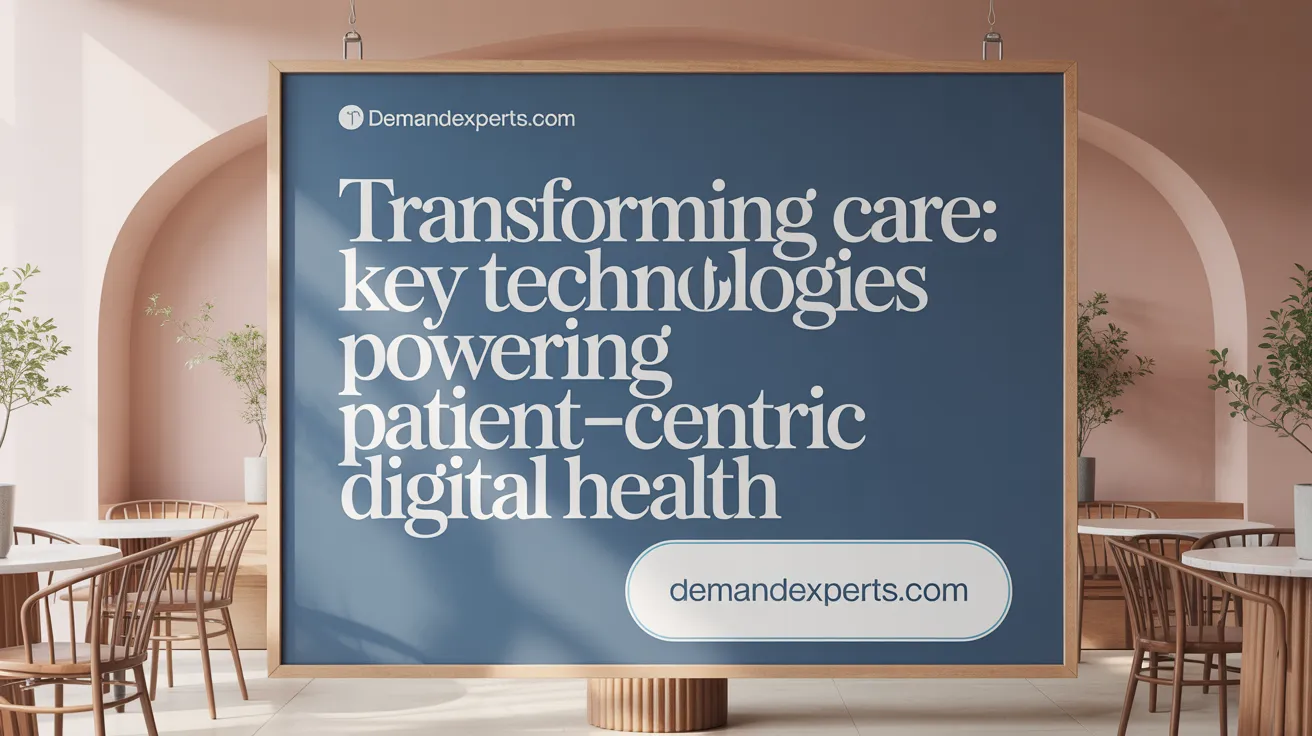
Role of Digital Platforms such as Patient Portals, Mobile Apps, and Telehealth
Digital platforms are foundational in shaping patient-centric healthcare by offering accessible, real-time healthcare management. Patient portals provide patients with capabilities such as appointment scheduling, secure messaging, and access to medical records, establishing a seamless connection between providers and patients. Mobile health applications expand this accessibility, allowing patients to manage care from any device, at any time, which increases engagement and satisfaction.
Telehealth platforms have particularly transformed healthcare delivery by enabling remote consultations and continuous care. Their convenience and flexibility align well with modern patient expectations, fostering higher retention and improving health outcomes, especially in behavioral health and rural communities.
Integration of AI and Data Analytics for Personalized Patient Experiences
Artificial Intelligence (AI) and advanced data analytics drive highly personalized patient journeys. AI-powered diagnostics and predictive analytics enable precision in treatment decisions, early disease detection, and customized care plans tailored to individual history and preferences. Data analytics tools capture patient-generated data and online interactions, providing insights that healthcare organizations use to optimize engagement strategies and workflows.
Through machine learning algorithms, healthcare providers can identify service gaps, predict patient needs, and automate routine communications such as appointment reminders and medication alerts, fostering continuous, proactive patient engagement.
Examples of Tools Like CaredFor App and AI-Driven Diagnostics Improving Care
The CaredFor app exemplifies patient-centered digital care by offering personalized care journeys that include journaling, surveys, educational resources, and collaborative planning. It supports ongoing engagement by facilitating direct communication and delivering real-time insights into patient health.
Similarly, AI-driven diagnostic platforms, such as those developed by leading institutions like Mayo Clinic, accelerate and enhance diagnostic accuracy. These tools analyze large data sets to pinpoint treatment areas quickly and personalize medication alerts based on genomic data, reducing clinician burden while improving patient outcomes.
Collectively, these technologies contribute to a healthcare ecosystem where personalized, efficient, and collaborative care is achievable, ensuring elevated patient satisfaction and measurable health improvements.
The Importance of Seamless Digital and In-Person Care Integration
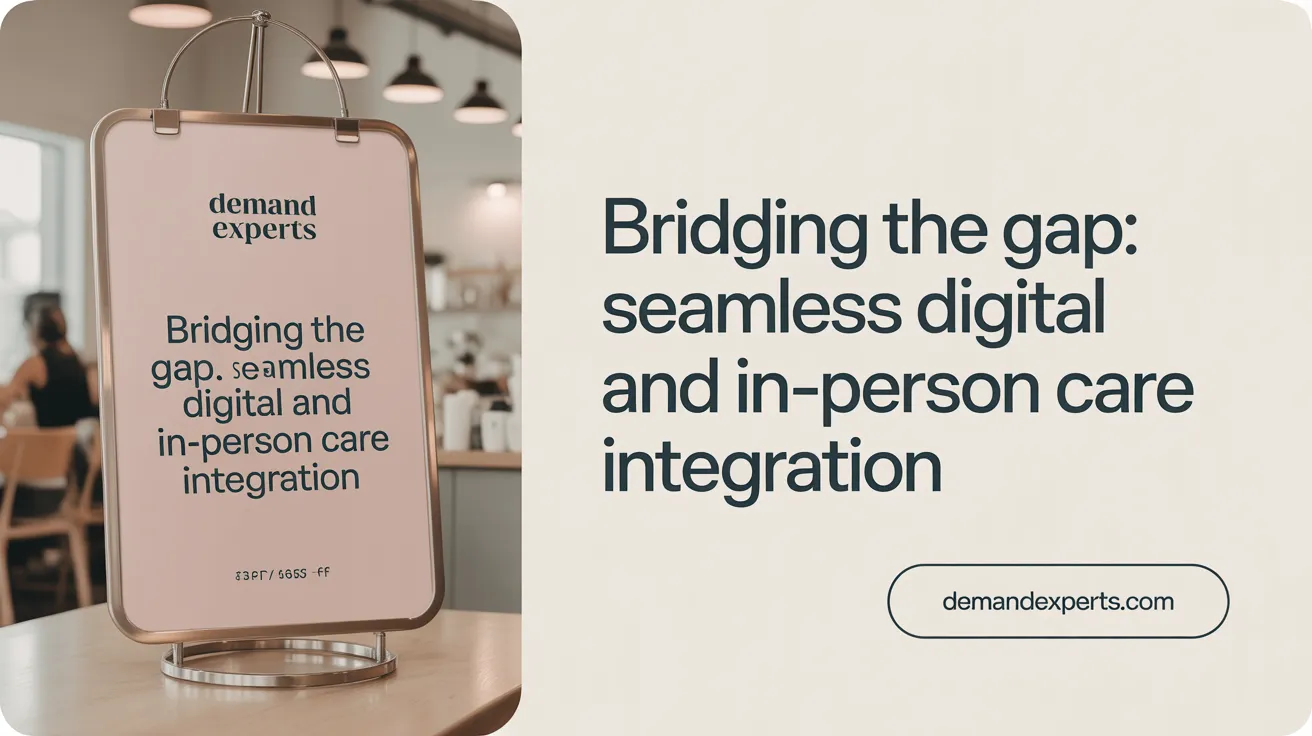
Hybrid care models combining virtual and face-to-face care
Hybrid care models that blend in-person visits with virtual care options have become a cornerstone of modern healthcare delivery. Such models enhance patient satisfaction by offering flexibility and convenience, meeting the rising demand for accessible services across various demographics. This dual approach enables healthcare providers to maintain quality care while accommodating patient preferences and logistical needs.
Challenges in interoperability and data sharing
One of the critical hurdles in integrating digital and in-person care lies in interoperability. Healthcare systems often operate on siloed electronic health records (EHRs) and other digital platforms originally designed for transactional data rather than integrated, patient-centered workflows. This limits seamless information sharing, which is crucial for coordinated patient journeys. Furthermore, technical barriers and privacy concerns complicate the exchange of health data, requiring focused efforts on developing common standards and robust infrastructure.
Patient preferences for digital scheduling, communication, and care access
Patients strongly favor digital tools that streamline their healthcare experience. Mobile-friendly digital scheduling platforms and patient portals are particularly valued for ease of use and 24/7 access to appointment management, medical records, and secure messaging with providers. A substantial majority prefer asynchronous communication through digital channels, facilitating timely responses without the constraints of traditional phone calls. These preferences underscore the need for healthcare organizations to optimize digital and in-person offerings, ensuring smooth transitions and consistent messaging across all touchpoints to foster trust and engagement.
Leveraging Digital Marketing to Enhance Patient Engagement and Retention

What digital marketing strategies are effective in healthcare?
Effective digital marketing in healthcare harnesses multiple channels including Healthcare paid search marketing, social media, email campaigns, SEO, and influencer partnerships. These strategies must prioritize personalization and compliance, ensuring HIPAA compliance in healthcare marketing and related regulations are met. Utilizing tools like Healthcare chatbots for patient inquiries and online appointment booking improves operational efficiency and patient experience. Additionally, integrating AI and machine learning helps tailor messaging, optimize campaigns, and analyze patient behaviors for better engagement.
Why is mobile optimization and reputation management critical in healthcare marketing?
Mobile devices account for over half of healthcare advertising spend, underscoring the necessity for Healthcare mobile optimization websites and content. Patients increasingly use smartphones to research providers and schedule care, making seamless mobile experiences essential. Reputation management in healthcare is equally imperative; online reviews and star ratings strongly influence patient choice. Healthcare organizations need proactive reputation strategies, including monitoring and responding to patient feedback promptly to maintain high ratings and build trust.
How do SEO, social media, online reviews, and content marketing drive patient acquisition?
SEO enhances discoverability by aligning website content with patient search behaviors, including local SEO strategies and service-specific landing pages. Social media platforms enable targeted outreach, patient education, and community engagement, fostering authenticity and trust. Online reviews serve as social proof, significantly impacting patient decisions and encouraging referrals. Content marketing through blogs, videos, and case studies establishes authority, educates patients, and counters misinformation, all of which enhance patient attraction and retention.
Collectively, these digital marketing components create an integrated patient acquisition and retention framework that drives measurable growth and satisfaction in healthcare services.
Addressing Equity and Accessibility in Digital Health Journeys
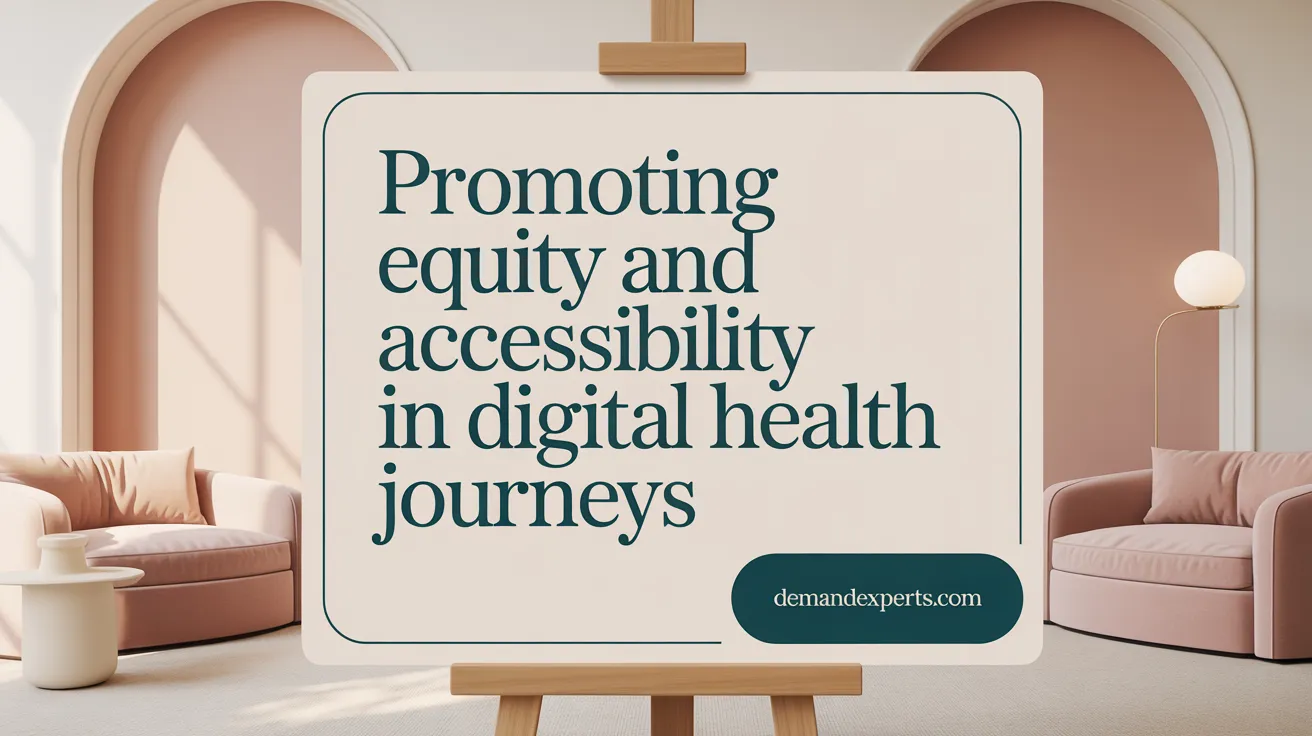
Challenges of Digital Divide Including Broadband Access and Digital Literacy
The digital transformation in healthcare presents undeniable benefits, yet it also highlights significant equity challenges. Limited broadband access remains a critical barrier, especially in rural and underserved communities, restricting patients' ability to engage with digital health tools effectively. Additionally, varying levels of digital literacy create disparities in accessing and utilizing telehealth platforms, patient portals, and mobile health applications. These gaps risk widening existing health inequities if not properly addressed.
Frameworks such as Digital Health Care Equity Framework (DHEF)
To systematically tackle these issues, frameworks like the Digital Health Care Equity Framework (DHEF) have been developed. The DHEF integrates equity throughout the lifecycle of digital health solutions—from planning and development through implementation to ongoing monitoring. It emphasizes identifying and addressing digital determinants of health including infrastructure limitations and individual barriers such as language and cultural differences. The framework advocates for participatory design that involves community stakeholders to ensure that digital tools are both accessible and relevant.
Strategies to Make Digital Health Tools Inclusive and Accessible
Effective strategies for promoting digital health equity include enhancing infrastructure by expanding broadband coverage and providing alternative access methods like phone-based services for those without internet. Design considerations must prioritize usability for varying literacy levels, ensuring interfaces are intuitive and culturally sensitive. Healthcare organizations should actively involve diverse patient populations during the development process to tailor digital tools to their unique needs. Continuous training and education programs aimed at increasing digital literacy further empower patients to engage fully with these technologies, ultimately promoting equitable, patient-centered care.
Data Privacy, Security, and Ethical Considerations in Digital Patient Care

HIPAA and regulatory compliance in digital health marketing
Healthcare marketing must rigorously comply with regulations such as HIPAA compliance in healthcare marketing, GDPR, and the CAN-SPAM Act. These laws ensure the protection of patient information and dictate how healthcare providers manage, share, and communicate patient data in digital environments. Compliance is fundamental in safeguarding privacy and maintaining patient trust, especially when leveraging digital channels like paid search, social media, and email campaigns. Compliance also extends to digital tools like patient portals and mobile apps, where data must be secured through encrypted communications and access controls.
Patient data privacy concerns and cybersecurity measures
Protecting patient data privacy is paramount due to the sensitive nature of healthcare information. Cybersecurity frameworks employing layered security approaches and cyber resilience safeguard against increasing cyber threats in digital health environments. Challenges include preventing unauthorized access, mitigating misinformation spread, and addressing vulnerabilities in telehealth platforms and EHR integrations. Proactive measures such as secure messaging systems, continuous monitoring, and staff training on data handling significantly enhance security. Collaboration across health systems and technology partnerships also supports robust data protection practices. For more on building patient-centered cultures with technology, see Building a Patient-Centered Culture with Technology.
Ethical AI use and governance in patient-centered digital health
Artificial intelligence (AI) is increasingly integrated into patient care for diagnostics, personalized treatment, and predictive analytics. Ethical AI governance frameworks emphasize transparency, responsibility, and equitable deployment. Healthcare organizations must implement regulatory frameworks to ensure that AI tools respect patient autonomy, prevent bias, and operate securely. Transparent algorithms and participatory design involving patients and clinicians foster trust and improve acceptance. Governance extends to measuring outcomes and establishing operational controls to balance innovation with patient rights and safety. Ethical AI is essential for sustaining patient-centered, data-driven healthcare transformations. For further details, see AI Improves Patient Experience and WHO digital health initiatives.
Building Sustainable Digital Patient Engagement Through Continuous Improvement
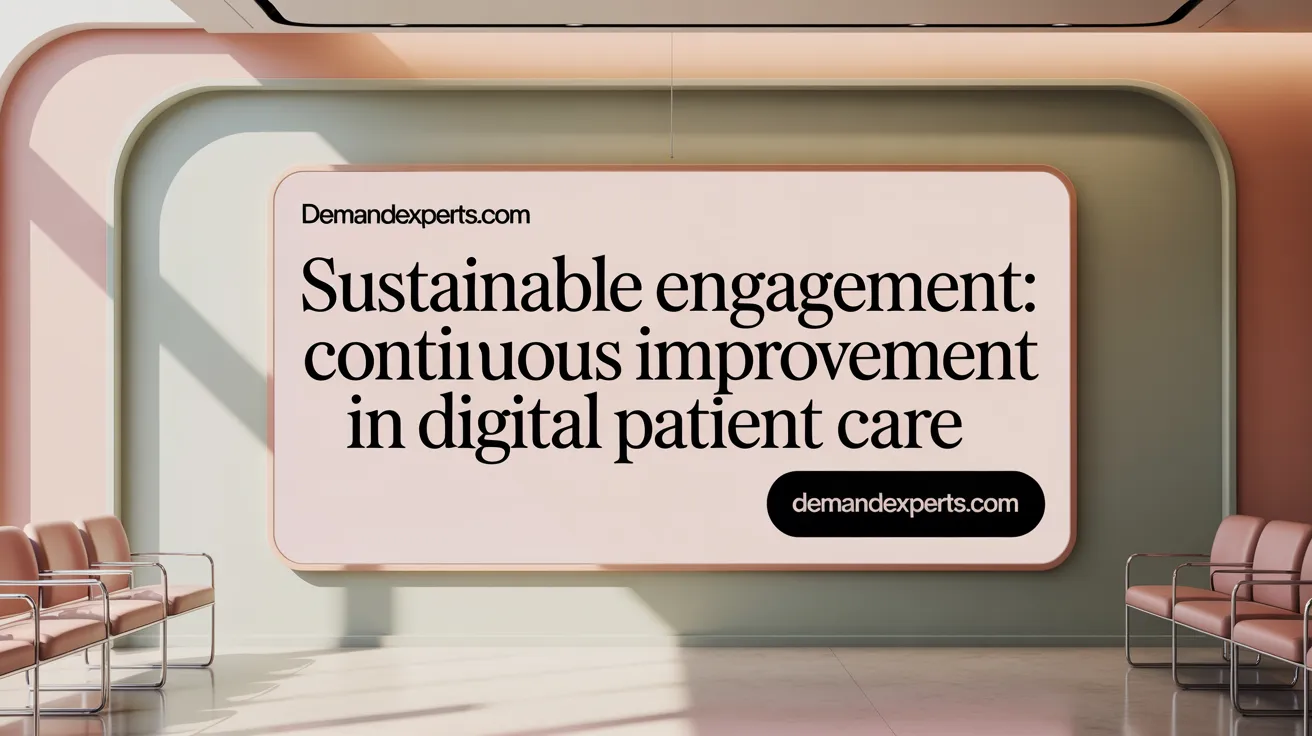
Why Is Patient Feedback Crucial in Digital Engagement?
Real-time patient feedback is fundamental to elevating healthcare service quality and ensuring patient satisfaction. Digital platforms, including patient portals and apps, allow healthcare providers to capture authentic patient experiences during the care journey promptly. This continuous feedback loop empowers patients, fosters transparent communication, and informs immediate service adjustments, thereby enhancing overall experience and trust.
How Does Analytics Enhance Patient Journeys?
Leveraging analytics tools enables healthcare organizations to interpret complex data from multiple digital touchpoints. Insights gleaned from patient feedback and behavior can spotlight inefficiencies in service delivery and patient pathways. By applying advanced analytics and AI-driven models, providers can personalize care journeys, optimize appointment scheduling, and predict service gaps. This refinement leads to improved health outcomes, reduced patient leakage, and heightened engagement.
What Role Does Leadership and Workforce Training Play?
Successful digital transformation requires committed leadership and a skilled workforce trained in new digital competencies. Leaders must champion patient-centric strategies, cultivate a culture receptive to technological change, and invest in staff education on digital tools and HIPAA compliance in healthcare marketing. Training enhances staff proficiency with digital systems, from AI-powered diagnostics to patient engagement platforms, ensuring seamless implementation. This holistic approach aligns operational goals with patient needs, securing sustainable digital engagement and improved care delivery.
Future Directions: Innovations Shaping Patient-Centric Digital Healthcare

Emerging Trends Such as AI-Powered Predictive Care and Big Data Analytics
The future of patient-centric digital healthcare is increasingly anchored in the use of artificial intelligence (AI) in healthcare and big data analytics in healthcare. AI-powered predictive care leverages patient-specific genomic data and large datasets to forecast disease risks and recommend preventative measures proactively. Tools like AI-driven diagnostics and predictive medication alerts are rapidly gaining FDA approval, highlighting their integration in clinical decision-making. Big data analytics extend beyond clinical data, incorporating social and behavioral information to tailor health interventions effectively. These technologies aim to enhance early disease detection, personalize treatment plans, and reduce clinician burnout through automation.
Expansion of Remote Monitoring and Home-Based Care Models
Digital healthcare is witnessing a paradigm shift towards more expansive remote monitoring and home-based care services. Telehealth usage, having surged dramatically since the pandemic, supports chronic and complex condition management with convenience and cost-effectiveness. Technologies such as wearable devices in healthcare and Internet of Things (IoT) tools facilitate real-time health monitoring, enabling timely interventions without traditional facility visits. Initiatives like hospital-at-home models and virtual nursing with smart nurse call systems are becoming central to healthcare delivery, promoting scalable, patient-centered services that improve outcomes and reduce hospitalizations.
Increasing Role of Interoperable Health Systems and Patient Empowerment
Interoperability remains a cornerstone for advancing patient-centric care, enabling seamless data sharing and integrated digital ecosystems. Standards like FHIR-based APIs and initiatives such as WHO’s global digital health strategy support this shift toward connected health records and real-time information flow. Empowering patients through digital portals and patient engagement technology, apps, and personalized care journeys encourages engagement, self-management, and shared decision-making. This collaborative environment fosters better adherence to therapies and improved satisfaction by aligning healthcare services with individual needs and preferences.
These innovations collectively promise to transform healthcare into a proactive, efficient, and personalized system that meets modern consumer expectations while reducing costs and improving clinical outcomes.
Conclusion: Embracing Patient-Centric Digital Journeys to Elevate Healthcare Delivery
Comprehensive Benefits of Patient-Centric Digital Strategies
Patient-centric digital healthcare strategies revolutionize the patient journey by enhancing engagement, satisfaction, and clinical outcomes. Personalized digital tools enable tailored care plans that respect individual medical histories, preferences, and goals, reducing inefficiencies and improving adherence.
Digital platforms offer real-time communication, remote monitoring, and seamless access to health information, making care more accessible and convenient. These innovations not only foster long-term patient-provider relationships but also reduce costs by minimizing unnecessary encounters and optimizing resource utilization.
Call to Action for Healthcare Providers
Healthcare organizations must prioritize the adoption of advanced digital tools such as AI-driven patient engagement platforms, telehealth services, and secure messaging systems. The integration of these technologies supports personalized, proactive care that aligns with modern patient expectations.
Implementing multi-channel digital marketing and communication strategies enhances visibility and strengthens patient trust. Providers should also invest in interoperability and staff training to maximize the impact of digital transformation initiatives.
Vision for a Future Empowered Healthcare Ecosystem
Looking forward, the healthcare ecosystem should embody a data-driven, inclusive, and transparent model that empowers patients to actively participate in their care. This patient-centric approach leverages innovative technologies to deliver equitable, efficient, and holistic healthcare.
By embracing personalized digital care journeys, healthcare systems can achieve improved outcomes, reduce disparities, and foster a sustainable, value-based care environment where patients are true partners in health management.
Introduction: The Shift Towards Patient-Centric Digital Healthcare
Overview of patient-centric healthcare
Patient-centric healthcare places the patient at the core of all clinical and operational decisions. This approach promotes a collaborative relationship between patients and providers, emphasizing personalized care planning that addresses individual medical histories, preferences, and goals.
Importance of digital transformation in healthcare delivery
Digital transformation revolutionizes the healthcare landscape by integrating technologies such as electronic health records (EHRs), telehealth, and AI-driven analytics. These advancements enable proactive care models, improve access and quality, and foster continuous patient engagement. As healthcare systems evolve, digital infrastructure and consumer-focused strategies are fundamental for meeting modern expectations and enhancing patient outcomes.
Benefits of personalized digital patient journeys
Personalized digital journeys leverage data-driven insights to tailor care pathways, improving patient satisfaction, adherence, and retention. Tools like digital care plans and patient engagement platforms empower patients to actively manage their health, access educational resources, and communicate seamlessly with providers. This personalized approach reduces costs, supports behavioral health, and strengthens long-term patient-provider relationships, ultimately driving better health outcomes.
Understanding the Digital Patient Journey in Modern Healthcare

What is the patient journey in healthcare?
The patient journey represents the entire sequence of experiences a patient encounters when interacting with healthcare services. This journey spans multiple stages, from initial health awareness and seeking help to undergoing treatment and maintaining ongoing care. It is inherently multi-stage and non-linear, involving complex touchpoints that influence health outcomes and patient satisfaction (patient journey in healthcare).
How do digital tools enhance patient journey mapping and experiences?
Digital technologies empower healthcare organizations to capture real-time, multifaceted patient interactions across different channels and devices. Tools such as patient portals, smartphone apps, and digital diaries facilitate continuous monitoring, communication, and feedback, enabling providers to gather detailed data at every touchpoint (capturing patient experiences with digital technologies).
Mapping the patient journey digitally helps identify inefficiencies and service gaps, allowing for personalized care plans that consider patient preferences, medical history, and behavior. Digital platforms support appointment management, secure messaging, health analytics, and educational resources, fostering deeper patient engagement (Digital patient care journey).
What are the key stages of patient engagement supported by digital interactions?
- Awareness and Education: Patients discover health information via online content, social media, and targeted digital marketing (Digital marketing in healthcare).
- Help-Seeking and Access: Digital scheduling, telehealth, and mobile apps improve ease of access and reduce barriers (Impact of Digital Health Solutions).
- Care and Treatment: Patient portals and remote monitoring enable continuous care, symptom tracking, and treatment adherence (Patient Engagement Technology).
- Behavioral and Lifestyle Changes: Digital coaching, reminders, and support groups encourage sustained healthy behaviors (Increasing patient engagement.
- Ongoing Care and Follow-Up: Secure messaging and automated reminders support long-term engagement and care continuity (digital patient engagement tools).
Overall, digital interactions provide patients with more control and convenience, promoting proactive health management and enhancing trust in healthcare providers (Patient-centric healthcare).
Key Technologies Empowering Patient-Centric Digital Care

Role of Digital Platforms such as Patient Portals, Mobile Apps, and Telehealth
Digital platforms are foundational in shaping patient-centric healthcare by offering accessible, real-time healthcare management. Patient portals provide patients with capabilities such as appointment scheduling, secure messaging, and access to medical records, establishing a seamless connection between providers and patients. Mobile health applications expand this accessibility, allowing patients to manage care from any device, at any time, which increases engagement and satisfaction.
Telehealth platforms have particularly transformed healthcare delivery by enabling remote consultations and continuous care. Their convenience and flexibility align well with modern patient expectations, fostering higher retention and improving health outcomes, especially in behavioral health and rural communities.
Integration of AI and Data Analytics for Personalized Patient Experiences
Artificial Intelligence (AI) and advanced data analytics drive highly personalized patient journeys. AI-powered diagnostics and predictive analytics enable precision in treatment decisions, early disease detection, and customized care plans tailored to individual history and preferences. Data analytics tools capture patient-generated data and online interactions, providing insights that healthcare organizations use to optimize engagement strategies and workflows.
Through machine learning algorithms, healthcare providers can identify service gaps, predict patient needs, and automate routine communications such as appointment reminders and medication alerts, fostering continuous, proactive patient engagement.
Examples of Tools Like CaredFor App and AI-Driven Diagnostics Improving Care
The CaredFor app exemplifies patient-centered digital care by offering personalized care journeys that include journaling, surveys, educational resources, and collaborative planning. It supports ongoing engagement by facilitating direct communication and delivering real-time insights into patient health.
Similarly, AI-driven diagnostic platforms, such as those developed by leading institutions like Mayo Clinic, accelerate and enhance diagnostic accuracy. These tools analyze large data sets to pinpoint treatment areas quickly and personalize medication alerts based on genomic data, reducing clinician burden while improving patient outcomes.
Collectively, these technologies contribute to a healthcare ecosystem where personalized, efficient, and collaborative care is achievable, ensuring elevated patient satisfaction and measurable health improvements.
The Importance of Seamless Digital and In-Person Care Integration

Hybrid care models combining virtual and face-to-face care
Hybrid care models that blend in-person visits with virtual care options have become a cornerstone of modern healthcare delivery. Such models enhance patient satisfaction by offering flexibility and convenience, meeting the rising demand for accessible services across various demographics. This dual approach enables healthcare providers to maintain quality care while accommodating patient preferences and logistical needs.
Challenges in interoperability and data sharing
One of the critical hurdles in integrating digital and in-person care lies in interoperability. Healthcare systems often operate on siloed electronic health records (EHRs) and other digital platforms originally designed for transactional data rather than integrated, patient-centered workflows. This limits seamless information sharing, which is crucial for coordinated patient journeys. Furthermore, technical barriers and privacy concerns complicate the exchange of health data, requiring focused efforts on developing common standards and robust infrastructure.
Patient preferences for digital scheduling, communication, and care access
Patients strongly favor digital tools that streamline their healthcare experience. Mobile-friendly digital scheduling platforms and patient portals are particularly valued for ease of use and 24/7 access to appointment management, medical records, and secure messaging with providers. A substantial majority prefer asynchronous communication through digital channels, facilitating timely responses without the constraints of traditional phone calls. These preferences underscore the need for healthcare organizations to optimize digital and in-person offerings, ensuring smooth transitions and consistent messaging across all touchpoints to foster trust and engagement.
Leveraging Digital Marketing to Enhance Patient Engagement and Retention

What digital marketing strategies are effective in healthcare?
Effective digital marketing in healthcare harnesses multiple channels including Healthcare paid search marketing, social media, email campaigns, SEO, and influencer partnerships. These strategies must prioritize personalization and compliance, ensuring HIPAA compliance in healthcare marketing and related regulations are met. Utilizing tools like Healthcare chatbots for patient inquiries and online appointment booking improves operational efficiency and patient experience. Additionally, integrating AI and machine learning helps tailor messaging, optimize campaigns, and analyze patient behaviors for better engagement.
Why is mobile optimization and reputation management critical in healthcare marketing?
Mobile devices account for over half of healthcare advertising spend, underscoring the necessity for Healthcare mobile optimization websites and content. Patients increasingly use smartphones to research providers and schedule care, making seamless mobile experiences essential. Reputation management in healthcare is equally imperative; online reviews and star ratings strongly influence patient choice. Healthcare organizations need proactive reputation strategies, including monitoring and responding to patient feedback promptly to maintain high ratings and build trust.
How do SEO, social media, online reviews, and content marketing drive patient acquisition?
SEO enhances discoverability by aligning website content with patient search behaviors, including local SEO strategies and service-specific landing pages. Social media platforms enable targeted outreach, patient education, and community engagement, fostering authenticity and trust. Online reviews serve as social proof, significantly impacting patient decisions and encouraging referrals. Content marketing through blogs, videos, and case studies establishes authority, educates patients, and counters misinformation, all of which enhance patient attraction and retention.
Collectively, these digital marketing components create an integrated patient acquisition and retention framework that drives measurable growth and satisfaction in healthcare services.
Addressing Equity and Accessibility in Digital Health Journeys

Challenges of Digital Divide Including Broadband Access and Digital Literacy
The digital transformation in healthcare presents undeniable benefits, yet it also highlights significant equity challenges. Limited broadband access remains a critical barrier, especially in rural and underserved communities, restricting patients' ability to engage with digital health tools effectively. Additionally, varying levels of digital literacy create disparities in accessing and utilizing telehealth platforms, patient portals, and mobile health applications. These gaps risk widening existing health inequities if not properly addressed.
Frameworks such as Digital Health Care Equity Framework (DHEF)
To systematically tackle these issues, frameworks like the Digital Health Care Equity Framework (DHEF) have been developed. The DHEF integrates equity throughout the lifecycle of digital health solutions—from planning and development through implementation to ongoing monitoring. It emphasizes identifying and addressing digital determinants of health including infrastructure limitations and individual barriers such as language and cultural differences. The framework advocates for participatory design that involves community stakeholders to ensure that digital tools are both accessible and relevant.
Strategies to Make Digital Health Tools Inclusive and Accessible
Effective strategies for promoting digital health equity include enhancing infrastructure by expanding broadband coverage and providing alternative access methods like phone-based services for those without internet. Design considerations must prioritize usability for varying literacy levels, ensuring interfaces are intuitive and culturally sensitive. Healthcare organizations should actively involve diverse patient populations during the development process to tailor digital tools to their unique needs. Continuous training and education programs aimed at increasing digital literacy further empower patients to engage fully with these technologies, ultimately promoting equitable, patient-centered care.
Data Privacy, Security, and Ethical Considerations in Digital Patient Care

HIPAA and regulatory compliance in digital health marketing
Healthcare marketing must rigorously comply with regulations such as HIPAA compliance in healthcare marketing, GDPR, and the CAN-SPAM Act. These laws ensure the protection of patient information and dictate how healthcare providers manage, share, and communicate patient data in digital environments. Compliance is fundamental in safeguarding privacy and maintaining patient trust, especially when leveraging digital channels like paid search, social media, and email campaigns. Compliance also extends to digital tools like patient portals and mobile apps, where data must be secured through encrypted communications and access controls.
Patient data privacy concerns and cybersecurity measures
Protecting patient data privacy is paramount due to the sensitive nature of healthcare information. Cybersecurity frameworks employing layered security approaches and cyber resilience safeguard against increasing cyber threats in digital health environments. Challenges include preventing unauthorized access, mitigating misinformation spread, and addressing vulnerabilities in telehealth platforms and EHR integrations. Proactive measures such as secure messaging systems, continuous monitoring, and staff training on data handling significantly enhance security. Collaboration across health systems and technology partnerships also supports robust data protection practices. For more on building patient-centered cultures with technology, see Building a Patient-Centered Culture with Technology.
Ethical AI use and governance in patient-centered digital health
Artificial intelligence (AI) is increasingly integrated into patient care for diagnostics, personalized treatment, and predictive analytics. Ethical AI governance frameworks emphasize transparency, responsibility, and equitable deployment. Healthcare organizations must implement regulatory frameworks to ensure that AI tools respect patient autonomy, prevent bias, and operate securely. Transparent algorithms and participatory design involving patients and clinicians foster trust and improve acceptance. Governance extends to measuring outcomes and establishing operational controls to balance innovation with patient rights and safety. Ethical AI is essential for sustaining patient-centered, data-driven healthcare transformations. For further details, see AI Improves Patient Experience and WHO digital health initiatives.
Building Sustainable Digital Patient Engagement Through Continuous Improvement

Why Is Patient Feedback Crucial in Digital Engagement?
Real-time patient feedback is fundamental to elevating healthcare service quality and ensuring patient satisfaction. Digital platforms, including patient portals and apps, allow healthcare providers to capture authentic patient experiences during the care journey promptly. This continuous feedback loop empowers patients, fosters transparent communication, and informs immediate service adjustments, thereby enhancing overall experience and trust.
How Does Analytics Enhance Patient Journeys?
Leveraging analytics tools enables healthcare organizations to interpret complex data from multiple digital touchpoints. Insights gleaned from patient feedback and behavior can spotlight inefficiencies in service delivery and patient pathways. By applying advanced analytics and AI-driven models, providers can personalize care journeys, optimize appointment scheduling, and predict service gaps. This refinement leads to improved health outcomes, reduced patient leakage, and heightened engagement.
What Role Does Leadership and Workforce Training Play?
Successful digital transformation requires committed leadership and a skilled workforce trained in new digital competencies. Leaders must champion patient-centric strategies, cultivate a culture receptive to technological change, and invest in staff education on digital tools and HIPAA compliance in healthcare marketing. Training enhances staff proficiency with digital systems, from AI-powered diagnostics to patient engagement platforms, ensuring seamless implementation. This holistic approach aligns operational goals with patient needs, securing sustainable digital engagement and improved care delivery.
Future Directions: Innovations Shaping Patient-Centric Digital Healthcare

Emerging Trends Such as AI-Powered Predictive Care and Big Data Analytics
The future of patient-centric digital healthcare is increasingly anchored in the use of artificial intelligence (AI) in healthcare and big data analytics in healthcare. AI-powered predictive care leverages patient-specific genomic data and large datasets to forecast disease risks and recommend preventative measures proactively. Tools like AI-driven diagnostics and predictive medication alerts are rapidly gaining FDA approval, highlighting their integration in clinical decision-making. Big data analytics extend beyond clinical data, incorporating social and behavioral information to tailor health interventions effectively. These technologies aim to enhance early disease detection, personalize treatment plans, and reduce clinician burnout through automation.
Expansion of Remote Monitoring and Home-Based Care Models
Digital healthcare is witnessing a paradigm shift towards more expansive remote monitoring and home-based care services. Telehealth usage, having surged dramatically since the pandemic, supports chronic and complex condition management with convenience and cost-effectiveness. Technologies such as wearable devices in healthcare and Internet of Things (IoT) tools facilitate real-time health monitoring, enabling timely interventions without traditional facility visits. Initiatives like hospital-at-home models and virtual nursing with smart nurse call systems are becoming central to healthcare delivery, promoting scalable, patient-centered services that improve outcomes and reduce hospitalizations.
Increasing Role of Interoperable Health Systems and Patient Empowerment
Interoperability remains a cornerstone for advancing patient-centric care, enabling seamless data sharing and integrated digital ecosystems. Standards like FHIR-based APIs and initiatives such as WHO’s global digital health strategy support this shift toward connected health records and real-time information flow. Empowering patients through digital portals and patient engagement technology, apps, and personalized care journeys encourages engagement, self-management, and shared decision-making. This collaborative environment fosters better adherence to therapies and improved satisfaction by aligning healthcare services with individual needs and preferences.
These innovations collectively promise to transform healthcare into a proactive, efficient, and personalized system that meets modern consumer expectations while reducing costs and improving clinical outcomes.
Conclusion: Embracing Patient-Centric Digital Journeys to Elevate Healthcare Delivery
Comprehensive Benefits of Patient-Centric Digital Strategies
Patient-centric digital healthcare strategies revolutionize the patient journey by enhancing engagement, satisfaction, and clinical outcomes. Personalized digital tools enable tailored care plans that respect individual medical histories, preferences, and goals, reducing inefficiencies and improving adherence.
Digital platforms offer real-time communication, remote monitoring, and seamless access to health information, making care more accessible and convenient. These innovations not only foster long-term patient-provider relationships but also reduce costs by minimizing unnecessary encounters and optimizing resource utilization.
Call to Action for Healthcare Providers
Healthcare organizations must prioritize the adoption of advanced digital tools such as AI-driven patient engagement platforms, telehealth services, and secure messaging systems. The integration of these technologies supports personalized, proactive care that aligns with modern patient expectations.
Implementing multi-channel digital marketing and communication strategies enhances visibility and strengthens patient trust. Providers should also invest in interoperability and staff training to maximize the impact of digital transformation initiatives.
Vision for a Future Empowered Healthcare Ecosystem
Looking forward, the healthcare ecosystem should embody a data-driven, inclusive, and transparent model that empowers patients to actively participate in their care. This patient-centric approach leverages innovative technologies to deliver equitable, efficient, and holistic healthcare.
By embracing personalized digital care journeys, healthcare systems can achieve improved outcomes, reduce disparities, and foster a sustainable, value-based care environment where patients are true partners in health management.


